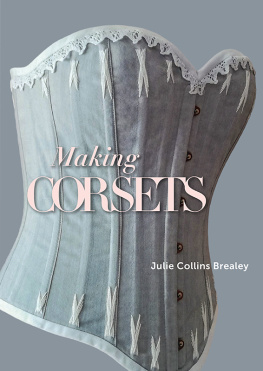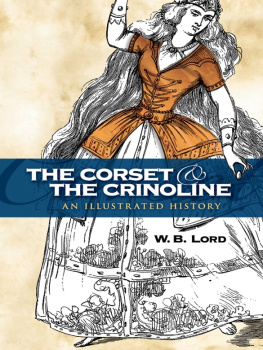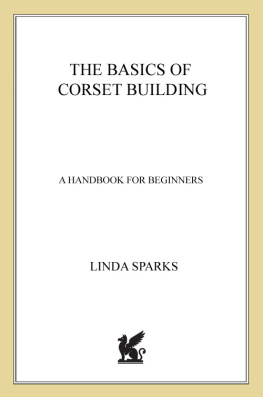Page List
Making
CORSETS
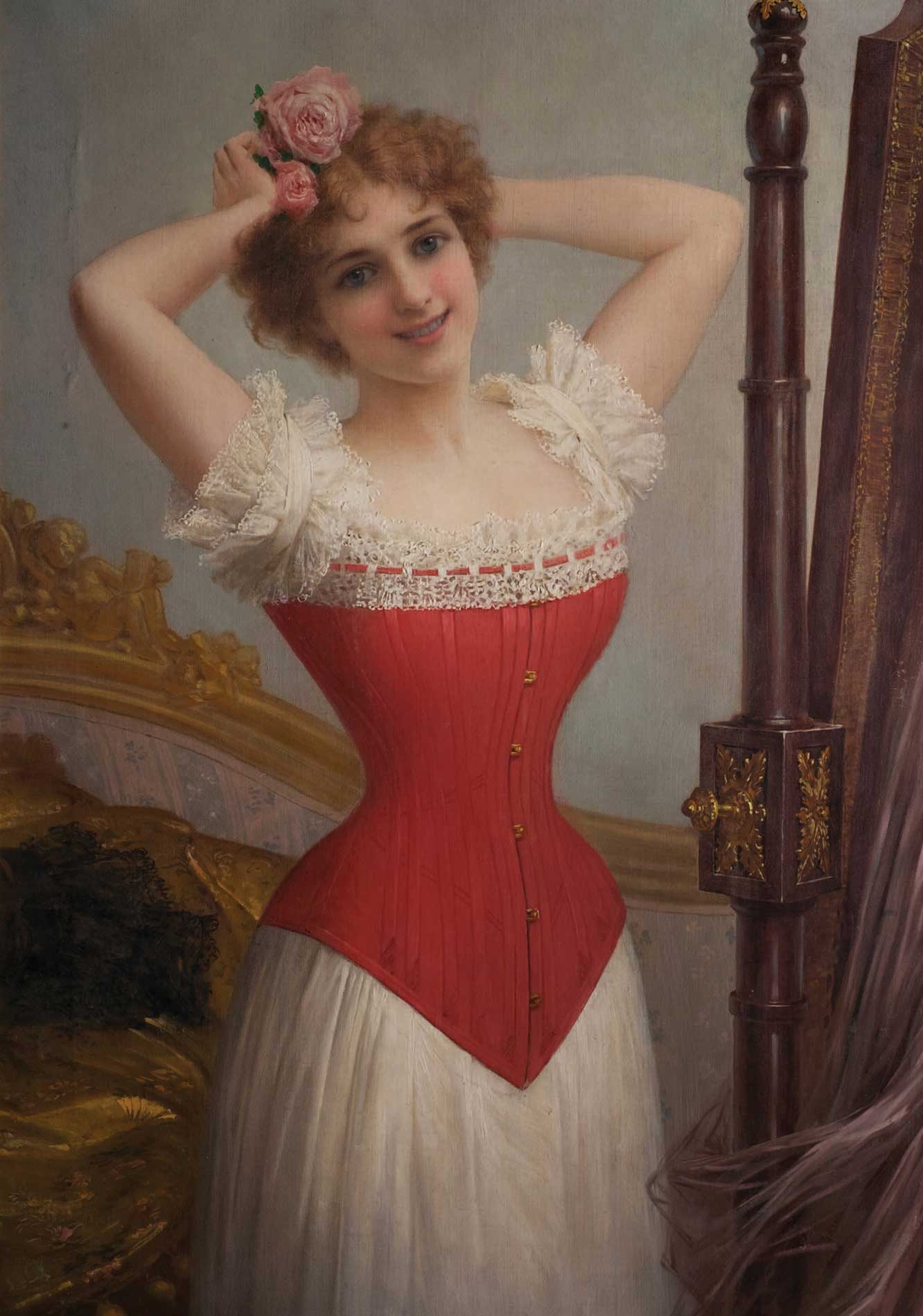
Lady in a Red Corset, artist unknown, oil on canvas, from the PCF Fine Art Collection. (Reproduced with permission of Leicestershire County Council Museums Service)
Making
CORSETS
Julie Collins Brealey

First published in 2021
by The Crowood Press Ltd
Ramsbury, Marlborough
Wiltshire SN8 2HR
www.crowood.com
This e-book first published in 2021
Julie Collins Brealey 2021
All rights reserved. This e-book is copyright material and must not be copied, reproduced, transferred, distributed, leased, licensed or publicly performed or used in any way except as specifically permitted in writing by the publishers, as allowed under the terms and conditions under which it was purchased or as strictly permitted by applicable copyright law. Any unauthorised distribution or use of this text may be a direct infringement of the authors and publishers rights, and those responsible may be liable in law accordingly.
British Library Cataloguing-in-Publication Data
A catalogue record for this book is available from the British Library.
ISBN 978 1 78500 821 4
Dedication
This book is dedicated to the memory of my wonderful
Mum and Dad, Dora and Keith. I know you would be proud.
Introduction
I have been teaching corset making now for a number of years, so when I was approached to write this book I felt that this was a great opportunity to pass on my experience and skills in detailing the process. I believe you will derive the same sense of satisfaction, achievement and pride in making a corset as I do.
On writing this book, my intention was to attempt to make the art of creating a corset accessible to all skill levels, whether you have some experience with sewing and using patterns or whether you are a complete beginner. Whatever your degree of knowledge in the subject, this book should offer technical guidance and new ideas and tips for you to work with. If you are an experienced corset maker, you may find a few useful methods and suggestions to add to your collection.
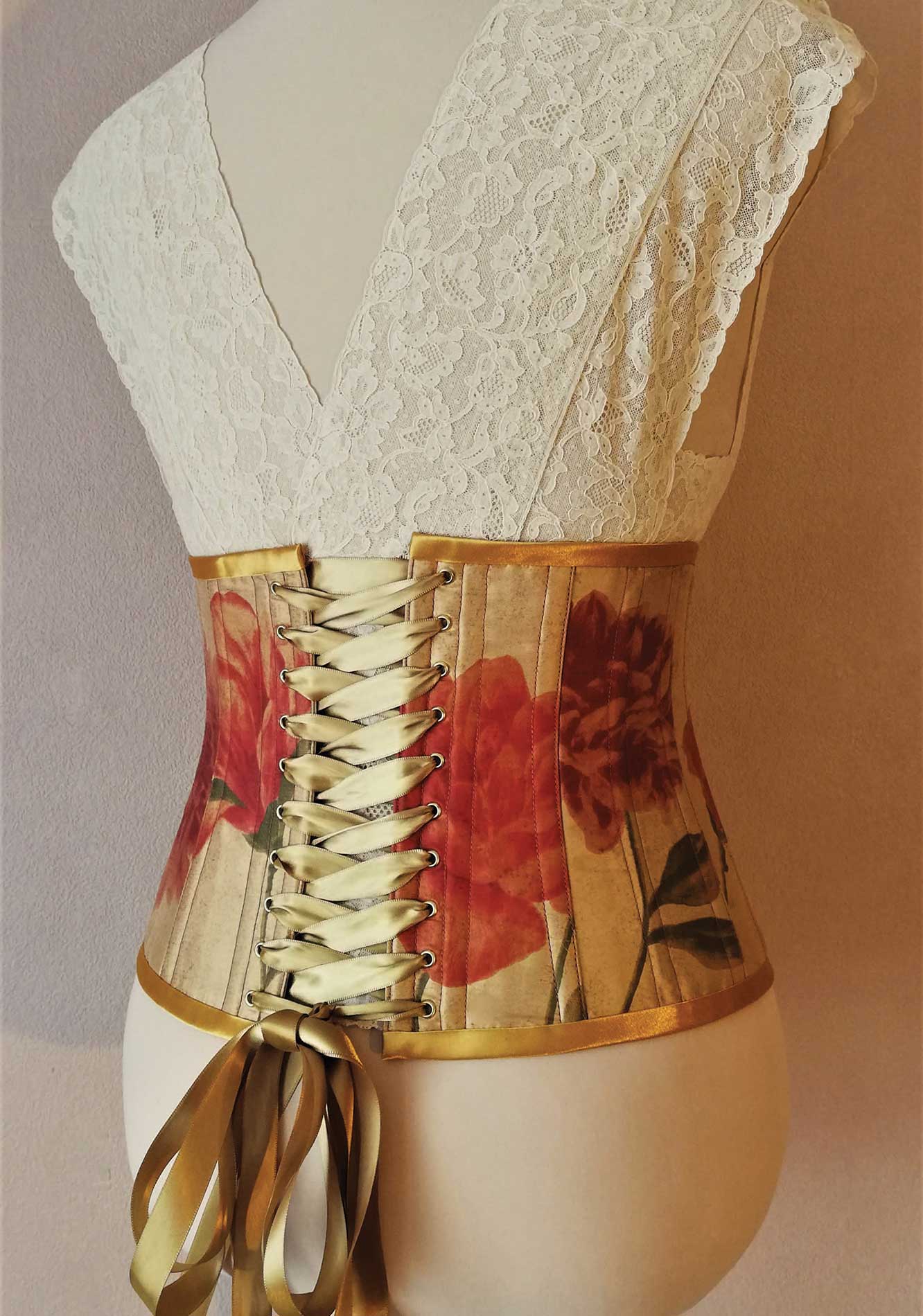
Floral silk underbust corset.
Your reason for making a corset is entirely personal. The satisfaction of seeing the garment come to life, with its two-dimensional panels transforming into the curving shapes of the three-dimensional piece, is magical. This is reward enough. Then, achieving the flattering fit which enhances the shape of the body is gratifying. Finally, progressing onto the finishes and embellishments to complete your unique creation is truly an achievement. However, the purpose of the corset may be solely because of the feeling that this body-hugging garment offers. The support, the way that it shapes the body these are enough for many people to want to create their own corset.
Maybe there are other reasons: your goal may be historically accurate corsets or those made for reenactment you may wish to construct these using techniques and materials as authentic as possible, performing much of the stitching by hand or by a vintage hand-operated sewing machine. Alternatively, your corset may be destined for use on the stage, in costume drama or burlesque, or for fetish wear. Whatever the purpose, you will want your corset to be the best that it can be well-constructed, with a good fit and plenty of support.
If the corset fits well and supports the body effectively, it should not cause any undue pain or damage. Contrary to popular belief, a corset is not necessarily detrimental to a persons health. However, over the centuries, experiments with the fashionable shaping of the day have caused some discomforts. Generally, though, a well-fitting corset should be quite comfortable. Furthermore, the support that a corset offers is usually beneficial to the posture and to any minor back problems. If you wish to tight-lace your corset, try to do this gradually: you will find that extreme tight lacing will be uncomfortable otherwise.
With this book, my intention is to lead you through the creation of a corset, from the initial inspiration and design through to the beautifully finished result.
Throughout this journey, we will explore the materials and tools used to make your corset. We will then look at what constitutes a good fit, before moving on to accurately measuring the body to try to achieve this. There is a comprehensive chapter detailing the corset pattern, where we will explore the advantages of both the self-drafted and the commercially available pattern. I will demonstrate, through clear step-by-step instructions, the processes of adjusting the commercial pattern to fit and of self-drafting a pattern to your own body measurements. This will lead on to the construction of a temporary mock-up garment, a toile, which will enable you to perfect the fit, before moving on to a selection of corset-making techniques which you will apply to your corset.
In this book, there are three corset projects for you to follow. These are designed for the female figure but all the information on fitting and construction is translatable to corset making for the male shape.
The three projects demonstrate the creation of two overbust corsets and one underbust corset. These are all based on a traditional Victorian hourglass shape, which would have featured ten or twelve panels. Each project illustrates techniques of styling the corset and adjusting your original pattern to achieve this design. Methods relevant to constructing the corset are detailed, including some alternatives for you to try. Towards the end of the book there are suggestions of ways that you can customize your corset by adding decorations, embellishments and so on. Techniques in this book are supported with detailed step-by-step instructions and photographs, carefully leading you through each process.
The status of the corset has progressed from its original function as an item of underclothing. Who would have thought that this fascinating little garment, which has seen so many changes through the centuries, would now be regarded as a fashion statement and worn as outerwear?
This progression is shown at the beginning of the book where I have included a concise chapter on the history of the corset, introducing the garment and exploring its development, both its changing shape in fashion and its function, through the ages.
Though I will not be demonstrating historical corset construction techniques in this book, I do appreciate the exploration and research that went into achieving the most effective practices. The groundwork was done, and our modern methods are merely fine-tuned versions of these processes.
I will, however, be drawing comparisons between old and modern methods and materials, and the development from one to the other. I will be detailing alternative techniques to offer different options when working on your projects.
Whichever methods you choose for assembling your corset, it is necessary for the garment to be sturdy and well assembled. The corset is unlike any other garment that you will have made before in that its dimensions are smaller than your body measurements (this is called negative ease). Because of this, the corset, when worn, is subjected to much stress, especially on seams, lacings and so on, so it is very important to use suitable materials and construction techniques to add longevity to the garment. It would be a great pity to have spent many hours in the assembly of the corset only to find that it falls apart after having been worn only a few times.

